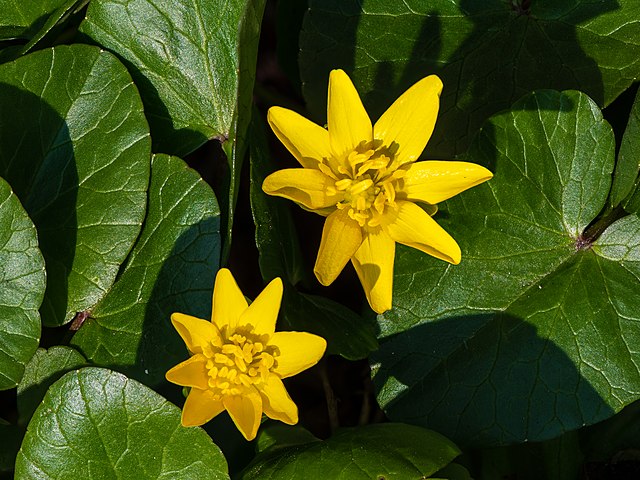Pilewort, or Lesser Celandine (Ficaria verna) is a flowering plant in the buttercup family. It is native to Europe and has distinctive bright yellow flowers. It is now quite widespread and is considered to be an invasive species in a number of regions of the world. Due to its toxicity towards grazing animals, it is listed as a noxious weed in several states in the USA. Nevertheless, it is often to be found as an ornamental plant in gardens and a number of cultivars are available.

When the plant is damaged or crushed a toxin, protoanemonin, is released which can cause itching, rashes or blistering on the skin. Ingestion can cause nausea, vomiting, dizziness, spasms, or paralysis. This toxin is deactivated when the plant is dried and cooking of the plants also removes the toxicity. In this way, the plants have been incorporated in diets or herbal medicine.
The plant is known as pilewort by some herbalists because it has historically been used to treat piles (haemorrhoids). Due to its astringency, it has also been used for many years in the treatment of throat and mouth ulcers. The leaves of lesser celandine have been used to treat scurvy, due to their high vitamin C content. The herbal preparations possess calming, antibacterial, antispasmodic, and analgesic qualities which aid in narrowing blood vessels and minimizing bleeding, as well as in relieving itching and swelling.
An infusion of the herb can be taken internally or applied topically as an ointment. For topical application as an ointment the herb is prepared from the bruised and dried herb and, traditionally, fresh lard, although the latter is now more often replaced by petroleum jelly.
